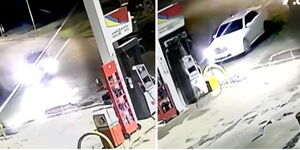The Kenya Revenue Authority (KRA) has harmonised valuation parameters of used motor vehicle units in line with a directive President William Ruto gave at the tail end of July 2023.
In a notice to all staff dated Tuesday, August 29, the Commissioner of Customs and Border Control Department Pamela Ahago noted that the authority had chosen to adopt the depreciation schedule endorsed by the East African Community Council of Ministers.
According to the new schedule, all vehicles that have aged more than 1 year but less than or equal to 2 years will be considered to have depreciated at the rate of 20 per cent while those that have aged more than 2 years and less than or equal to 3 years will have depreciated at the rate of 30 per cent.
The full schedule appears below;
"All staff are required to adhere to this valuation schedule with effect from 1st September 2023," read the statement in part.
The new guidelines represent a shift from KRA's existing valuation approach, which considers the initial month of registration. In contrast, other bodies like the National Transport and Safety Authority (NTSA) use a full-year assessment.
Traditionally, when the precise date of initial registration remains uncertain, the approach has been to utilize the final month of the calendar year. This determination helps establish both the rate of depreciation for the vehicle and its customs value, essential for taxation purposes.
The difference in techniques used to determine a vehicle's age resulted in motor vehicle importers raising concerns especially where the documents presented did not display the date when the car was first registered.
In July, Trade CS Moses Kuria argued that motorists bore the brunt of the differences. He, as a result, rolled out a plan to harmonise the calculation of vehicle age limit to streamline the importation process.
During that period, he noted that the Kenya Bureau of Standards (KEBS) employed a categorisation method where all vehicles registered from January to December in a given year were grouped together to determine the age limit. This contrasted with the approach used by KRA.
"On the issue of the vehicle limits, we have a problem because, clearly, NTSA and KEBS, everyone has got their own definition of the vehicle," he stated.
"We are asking for harmonisation so that vehicles are deemed to be manufactured in a certain year or belong to a certain age, as a block to avoid all that confusion."
His sentiments came two years after the Car Importers Association of Kenya (CIAK) took on the three main agencies over the calculation of the 8-year age limit of imported vehicles.
In 2021, a shipment comprising roughly 20,000 vehicles was withheld at the Port of Mombasa for months after the relevant agencies failed to reach a consensus on the optimal method for establishing an eight-year threshold. The majority of these vehicles had manufacturing dates in 2013.
Most of the vehicles in the shipment risked being destroyed since they had suffered delays due to the Covid-19 pandemic.












